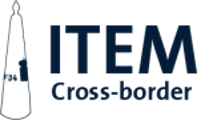On 22 October 2018, the province of Zeeland and the Ministry of the Interior and Kingdom Relations (BZK) asked ITEM to draw up an inventory of bottlenecks that hinder North Sea Port in the cross-border port area of Ghent and Zeeland. These are bottlenecks caused by differences in laws and regulations between the countries. The trigger for the inventory is the merger of the ports of Ghent and Zeeland Seaports into North Sea Port on 1 January 2018. This merger was initiated to strengthen the port’s international position and increase competitiveness.
The merger of the port companies in the two countries was challenging, but once formalised, the authorities involved want legal differences between Belgium/Flanders on the one hand and the Netherlands on the other to be as little an obstacle as possible to the functioning of the port company and the employers and employees in the port area. Although the study area is limited to North Sea Port and the Canal Zone, many of the bottlenecks identified will apply to the entire South Netherlands-Flanders border area.
Organisations in Zeeland advocate the creation of an experimental zone or testing ground for the port area, out of the assumption that legal differences hinder the development of the cross-border area1. For this reason, the province of Zeeland and the Ministry of the Interior and Kingdom Relations have asked ITEM to provide insight into the legal differences that (may) hinder development in this area. This list will serve as the basis for an academic study that the Netherlands and Flanders will set up jointly with the aim of assessing whether a mechanism can be developed for the border area that can solve the inventoried obstacles for the cross-border port area.2
It is emphasised that this list should not be a static document. It is expected that from the cooperation in the port area and from the merged cross-border port authority, (legal) differences will always emerge that can be obstructive. These will then have to be added to this list by relevant authorities.
The list, as included in this document, provides an indicative overview of the bottlenecks resulting from the cross-border port merger of the ports of Ghent and Zeeland in North Sea Port. This list is the result of three workshops between ITEM and North Sea Port staff where already known bottlenecks were collected. After the workshops, ITEM further explored the legal details of the bottlenecks and verified the insights gathered with the help of external sources. During several telephone interviews with port employees, several questions and bottlenecks were discussed that had not yet been (clearly) addressed during the workshops.
The overview shows the bottlenecks as identified by the port authority as follows:
- Bureaucracy cross-border working in one company (dis-coordination/administrative burden)
- Human Resource Management (bottlenecks cross-border working)
- Recognition of professional qualification and competences (port captain/port master)
- Infrastructure development (rail/public transport)
- Infrastructure development (CO2 transport/tubes)
- Environment – waste transport (soil and sediment)
- Environment – transport of waste materials (ship-generated waste)
- Environment – external safety (bunkering LNG)
Download the full North Sea Port cross-border bottlenecks inventory here (Dutch only).
1 See: https://www.pzc.nl/zeeuws-nieuws/zeeuwse-bedrijfsleven-wil-bijzondere-status-voor-grensregio~acb97049/
2 During the Flemish Dutch government summit on 5 November 2018, the Flemish Prime Minister and the Dutch State Secretary for the Interior and Kingdom Relations agreed that this inventory list will be input for a joint study to be conducted by knowledge institutions from both countries. This study should clarify which instruments the Netherlands and Flanders have or should develop to address the inventoried obstacles for the cross-border port area. It was also expressly agreed that this research should also include obstacles that arise elsewhere in the Dutch-Flemish border areas. Instruments yet to be developed do not exclude the possibility of experimental legislation in both countries. This is in line with the idea that Mr Donner launched in 2016, in order to be able to use this to create a defined cross-border area where one set of rules can de facto apply to a certain policy area. See also the letter from the State Secretary for the Interior and Kingdom Relations to the House of Representatives dated 26 November 2018: TK, 2018-2019, 32 851, no. 53: https://zoek.officielebekendmakingen.nl/kst-32851-53.html

